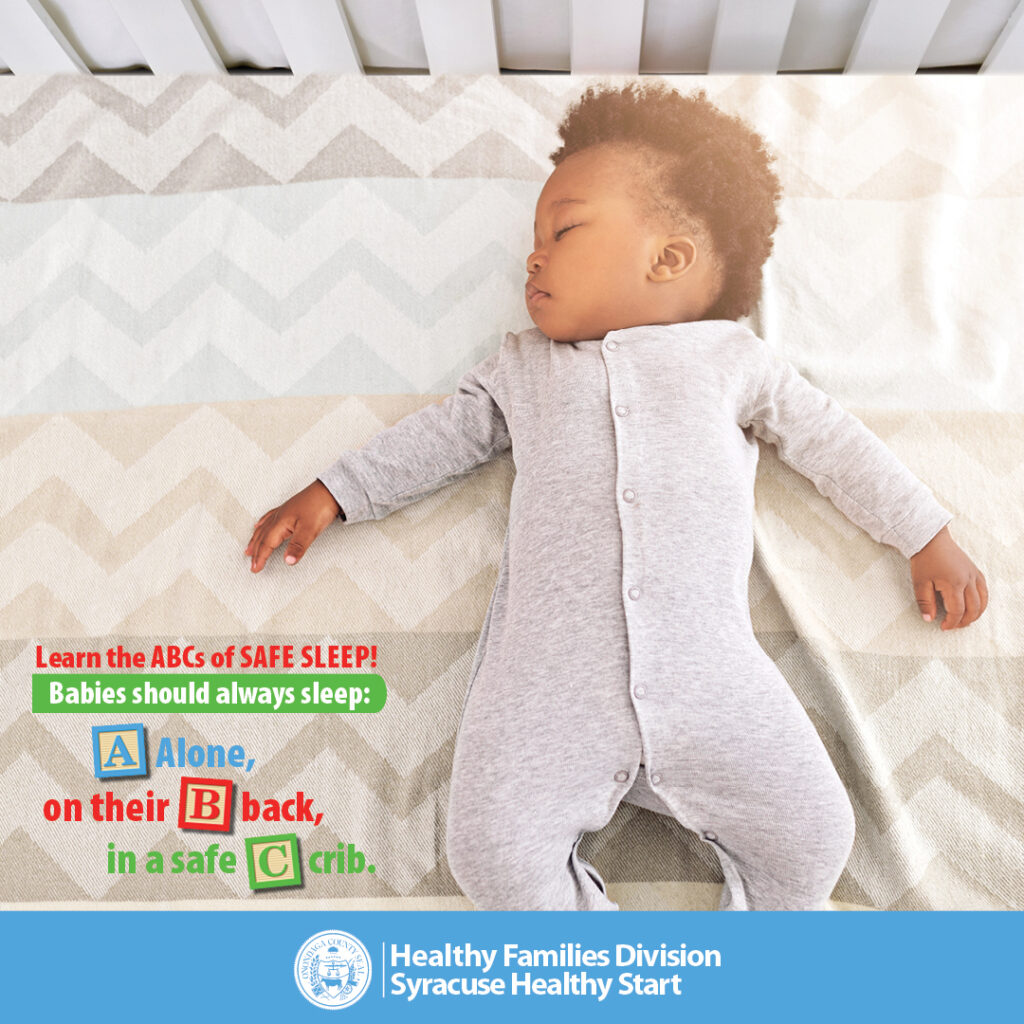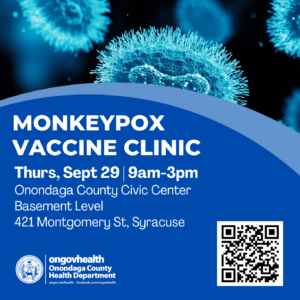ONONDAGA COUNTY, NOVEMBER 4, 2023 – There continue to be additional cases of monkeypox (MPX) in Onondaga County, for a total of 4 confirmed cases to date. These cases are not connected, individuals have isolated, and there is little to no risk to the general population.
Vaccination is the safest way to protect yourself against MPX when given before or shortly after an exposure. For anyone at risk of contracting the disease, or at future risk of contracting the disease, vaccine is available at the OCHD clinic in Room 080 of the Civic Center by calling 315-435-3236 for an appointment. There will be an upcoming Health Department clinic at ACR Health, 627 Genesee Street, Syracuse on Friday, November 18th from 10:00 am – 2:00 pm for both appointments and walk-ins. First and second doses will be offered. Individuals will need two doses of the vaccine, at least four weeks apart, and are considered fully vaccinated 14 days AFTER their SECOND dose. Anyone who has received a first dose elsewhere can get their second dose at any of the OCHD clinics as long as it has been four weeks since the first dose.
Prevention
Along with getting vaccinated, protect yourself by:
- Always talking to your sexual partner/s about any recent illness and being aware of new or unexplained sores or rashes on your body or your partner’s body.
- Avoiding close skin-to-skin contact, including hugging, kissing, cuddling and sexual activity with people who have signs like sores or rashes.
- Sores can look like pimples or blisters and may be painful and itch. The rash or sores may be located on or near the genitals or butt and can also appear on other areas like the hands, feet, chest, face, or inside mouth.
- Not sharing materials (bedding, towels, clothing, utensils, cups) with someone who has signs of or been diagnosed with MPX.
- Washing your hands often with soap and water or an alcohol-based hand sanitizer.
- Using appropriate personal protection (like a mask and gloves) when caring for others with signs or symptoms.
Symptoms of monkeypox include fever, headache, muscle aches and backache, swollen lymph nodes, chills, exhaustion, and a rash. A rash can look like a blister, pus-filled bump, open sore, or widespread small hard bumps on the body.
If you think you may have been exposed and are experiencing symptoms, please contact your primary care provider immediately. You can learn more by texting “MONKEYPOX” to 81336 or visiting https://on.ny.gov/3RYgHuP.
Clinic Details and Registration The OCHD clinic will be held Friday November 18, 2022 from 10:00 am to 2:00 pm at ACR Health at 627 Genesee St, Syracuse NY 13204. Those receiving a first-dose vaccine will require a second dose, which will be given on Friday, December 16, 2022 at the same time slot as the first dose. Please note that individuals are not considered fully vaccinated against monkeypox until 14 days after receiving their second dose.
Register for an appointment at https://monkeypox.ongov.net/vaccine/. Walk-ins are welcome.



